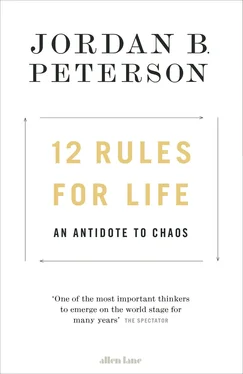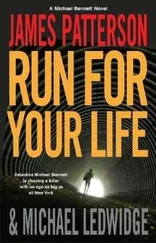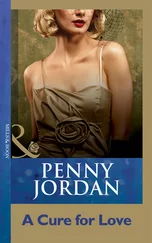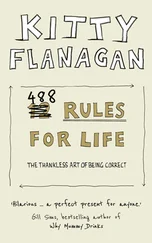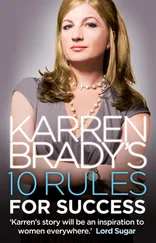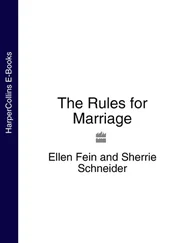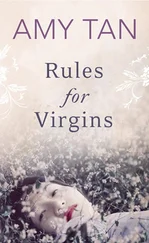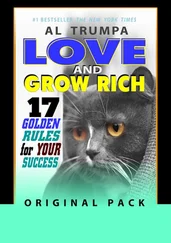There was something freeing about being with a person so learned yet speaking in such an unedited way. His thinking was motoric; it seemed he needed to think aloud , to use his motor cortex to think, but that motor also had to run fast to work properly. To get to liftoff. Not quite manic, but his idling speed revved high. Spirited thoughts were tumbling out. But unlike many academics who take the floor and hold it, if someone challenged or corrected him he really seemed to like it. He didn’t rear up and neigh. He’d say, in a kind of folksy way, “Yeah,” and bow his head involuntarily, wag it if he had overlooked something, laughing at himself for overgeneralizing. He appreciated being shown another side of an issue, and it became clear that thinking through a problem was, for him, a dialogic process.
One could not but be struck by another unusual thing about him: for an egghead Peterson was extremely practical. His examples were filled with applications to everyday life: business management, how to make furniture (he made much of his own), designing a simple house, making a room beautiful (now an internet meme) or in another, specific case related to education, creating an online writing project that kept minority students from dropping out of school by getting them to do a kind of psychoanalytic exercise on themselves, in which they would free-associate about their past, present and future (now known as the Self-Authoring Program).
I was always especially fond of mid-Western, Prairie types who come from a farm (where they learned all about nature), or from a very small town, and who have worked with their hands to make things, spent long periods outside in the harsh elements, and are often self-educated and go to university against the odds. I found them quite unlike their sophisticated but somewhat denatured urban counterparts, for whom higher education was pre-ordained, and for that reason sometimes taken for granted, or thought of not as an end in itself but simply as a life stage in the service of career advancement. These Westerners were different: self-made, unentitled, hands on, neighbourly and less precious than many of their big-city peers, who increasingly spend their lives indoors, manipulating symbols on computers. This cowboy psychologist seemed to care about a thought only if it might, in some way, be helpful to someone.
We became friends. As a psychiatrist and psychoanalyst who loves literature, I was drawn to him because here was a clinician who also had given himself a great books education, and who not only loved soulful Russian novels, philosophy and ancient mythology, but who also seemed to treat them as his most treasured inheritance. But he also did illuminating statistical research on personality and temperament, and had studied neuroscience. Though trained as a behaviourist, he was powerfully drawn to psychoanalysis with its focus on dreams, archetypes, the persistence of childhood conflicts in the adult, and the role of defences and rationalization in everyday life. He was also an outlier in being the only member of the research-oriented Department of Psychology at the University of Toronto who also kept a clinical practice.
On my visits, our conversations began with banter and laughter—that was the small-town Peterson from the Alberta hinterland—his teenage years right out of the movie FUBAR —welcoming you into his home. The house had been gutted by Tammy, his wife, and himself, and turned into perhaps the most fascinating and shocking middle-class home I had seen. They had art, some carved masks, and abstract portraits, but they were overwhelmed by a huge collection of original Socialist Realist paintings of Lenin and the early Communists commissioned by the USSR. Not long after the Soviet Union fell, and most of the world breathed a sigh of relief, Peterson began purchasing this propaganda for a song online. Paintings lionizing the Soviet revolutionary spirit completely filled every single wall, the ceilings, even the bathrooms. The paintings were not there because Jordan had any totalitarian sympathies, but because he wanted to remind himself of something he knew he and everyone would rather forget: that hundreds of millions were murdered in the name of utopia.
It took getting used to, this semi-haunted house “decorated” by a delusion that had practically destroyed mankind. But it was eased by his wonderful and unique spouse, Tammy, who was all in, who embraced and encouraged this unusual need for expression! These paintings provided a visitor with the first window onto the full extent of Jordan’s concern about our human capacity for evil in the name of good, and the psychological mystery of self-deception (how can a person deceive himself and get away with it?)—an interest we share. And then there were also the hours we’d spend discussing what I might call a lesser problem (lesser because rarer), the human capacity for evil for the sake of evil, the joy some people take in destroying others, captured famously by the seventeenth-century English poet John Milton in Paradise Lost .
And so we’d chat and have our tea in his kitchen-underworld, walled by this odd art collection, a visual marker of his earnest quest to move beyond simplistic ideology, left or right, and not repeat mistakes of the past. After a while, there was nothing peculiar about taking tea in the kitchen, discussing family issues, one’s latest reading, with those ominous pictures hovering. It was just living in the world as it was, or in some places, is.
In Jordan’s first and only book before this one, Maps of Meaning , he shares his profound insights into universal themes of world mythology, and explains how all cultures have created stories to help us grapple with, and ultimately map, the chaos into which we are thrown at birth; this chaos is everything that is unknown to us, and any unexplored territory that we must traverse, be it in the world outside or the psyche within.
Combining evolution, the neuroscience of emotion, some of the best of Jung, some of Freud, much of the great works of Nietzsche, Dostoevsky, Solzhenitsyn, Eliade, Neumann, Piaget, Frye and Frankl, Maps of Meaning , published nearly two decades ago, shows Jordan’s wide-ranging approach to understanding how human beings and the human brain deal with the archetypal situation that arises whenever we, in our daily lives, must face something we do not understand. The brilliance of the book is in his demonstration of how rooted this situation is in evolution, our DNA, our brains and our most ancient stories. And he shows that these stories have survived because they still provide guidance in dealing with uncertainty, and the unavoidable unknown.
One of the many virtues of the book you are reading now is that it provides an entry point into Maps of Meaning, which is a highly complex work because Jordan was working out his approach to psychology as he wrote it. But it was foundational, because no matter how different our genes or life experiences may be, or how differently our plastic brains are wired by our experience, we all have to deal with the unknown, and we all attempt to move from chaos to order. And this is why many of the rules in this book, being based on Maps of Meaning , have an element of universality to them.
Maps of Meaning was sparked by Jordan’s agonized awareness, as a teenager growing up in the midst of the Cold War, that much of mankind seemed on the verge of blowing up the planet to defend their various identities. He felt he had to understand how it could be that people would sacrifice everything for an “identity,” whatever that was. And he felt he had to understand the ideologies that drove totalitarian regimes to a variant of that same behaviour: killing their own citizens. In Maps of Meaning , and again in this book, one of the matters he cautions readers to be most wary of is ideology, no matter who is peddling it or to what end.
Читать дальше
